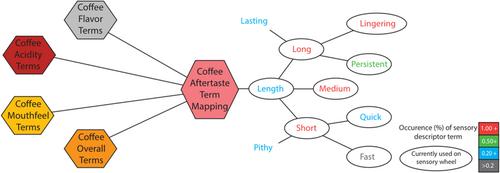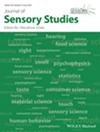Coffee is more than flavor. Though many articles focus on assessing coffee's flavor, the coffee characteristics for the acidity, mouthfeel, and aftertaste form part of the industry-standard assessment. The existing coffee flavor wheels provide commonly used terms for the assessment. However, there is limited discussion about the coffee acidity, mouthfeel, and aftertaste character. In this study, the terms used for describing coffee acidity, mouthfeel, and aftertaste were collated from published literature, coffee sensory panels, and internet material. A total of 679 unique sensory terms were identified for acidity, mouthfeel, and aftertaste and correlated into word maps. Based on word relationships and usage, the number of terms was reduced to a total of 95 for acidity, mouthfeel, aftertaste, and an overall grouping for shared terms. The reduced terms were arranged onto a coffee character wheel organized from broad to specific. The created character wheel provides a concise list of terms for coffee cuppers to assess acidity, mouthfeel, and aftertaste.
The coffee character wheel compliments the currently published coffee flavor wheels to provide explicit descriptors commonly used in the coffee industry. In addition to flavor, acidity, mouthfeel, and aftertaste are also used to assess coffee quality. Many sensory terms have been used to describe these attributes, but these used terms have not been summarized or discussed. Analysis of the used terms can assist in creating a common language surrounding the coffee character. The broad to specific terms on this coffee character wheel can help coffee cuppers to describe coffee acidity, mouthfeel, and aftertaste.



